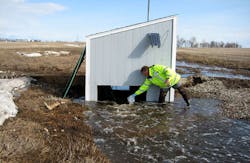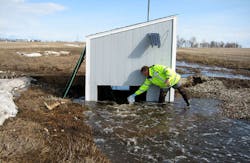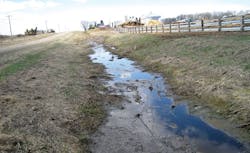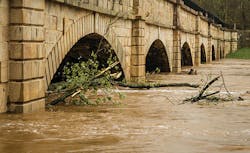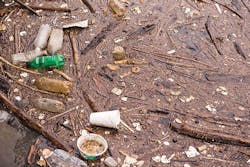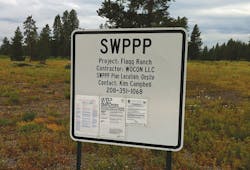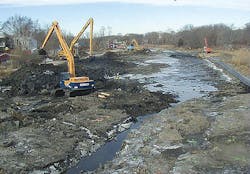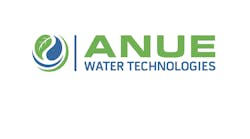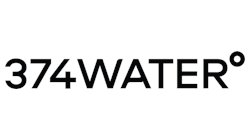By Art Haddaway, Industrial WaterWorld Editor
Many industrial sites are exposed to harsh weather conditions such as rain, snow, sleet, or hail. The resulting stormwater can rapidly accumulate across the premises and flow over land or impervious surfaces, causing flooding, disrupting vital processes and activities, and damaging critical equipment and supplies. Further, stormwater runoff often collects impurities such as chemicals and debris, potentially contaminating local waterbodies and impacting the environment.
Rainfall and its discharge, if not managed properly, can cause a variety of unwanted challenges for sectors ranging from construction to manufacturing to oil and gas to agriculture. As such, industry professionals are adopting several new and innovative programs and technologies to better manage -- and treat -- this stormwater as well as meet more stringent and ever-changing regulations at these locations.
These best management practices (BMPs) encompass real-time, in-the-field approaches such as electronic reporting and data streamlining; advanced treatment technologies like stormwater filtration and sanitation systems; and rainwater prevention and displacement techniques such as green infrastructure and low-impact development that are all effective in mitigating stormwater challenges. Moreover, they include upgraded regulatory programs like compliance-related resources and pollution restriction plans that are also efficient tools to aid in the process.
"The best way to prevent stormwater pollution from industrial sites is to minimize the use of materials and products in industrial activities that contaminate water and to minimize opportunities for stormwater to come into contact with industrial activities and polluting materials," said Monica Lee, an Environmental Protection Agency (EPA) spokesperson. "Proper stormwater management ensures that receiving waterbodies will be protected from potentially harmful pollutants associated with industrial activities," she added.
Accordingly, one of the main goals for industrial locations should be to implement an effective stormwater pollution prevention plan (SWPPP) that embraces these principles and complies with a National Pollutant Discharge Elimination System (NPDES) industrial stormwater permit. This includes compiling a team, conducting site assessment and planning, selecting control measures, establishing procedures for inspections and monitoring, and ultimately finalizing the plan, as mentioned in a recent report by the EPA.
At construction sites, for example, one of the main pollutants of concern is sediment, along with a variety of nutrients, heavy metals, organic compounds, pesticides, and oil and grease, explained Lee. Measures to help control stormwater at these locations involve minimizing disturbed areas and protecting natural features; phasing construction activities; stabilizing soils; protecting steep slopes and storm drain inlets; establishing perimeter controls and stabilized exit points; and inspecting and maintaining erosion and sediment controls, she said.
Similar to construction sites, Lee also noted that manufacturing and oil and gas operations encounter toxins such as heavy metals and organic materials as well as trash, debris, and oil and grease. Methods to help reduce stormwater pollution from these areas include maximizing infiltration, where appropriate; preventing pollution by maintaining equipment, training site staff on appropriate spill procedures, and adopting proper materials management and storage; and using structural practices such as swirl separators, sand filters and retentions basins. Often a combination of control measures works best, she said.
The industrial contaminants in stormwater discharges are largely dependent on "the sector of industrial activity and specific activities occurring at the facility, as well as site-specific factors, such as site layout, topography and soil types, said Lee. Further, impurities also vary based on the type of materials handled and how certain practices such as loading/unloading operations, outdoor storage, waste practices, outside process activities, illicit connection and non-stormwater discharges, and dust or particulate processes are managed, the EPA report noted.
With regard to industrial agriculture applications, the primary pollutants of concern include animal waste, chemical fertilizer runoff, herbicides and insecticides, and biotic/abiotic byproducts, to name a few, according to the EPA. Techniques to combat these impurities include installing a flush tank or lagoon system; designing cow pastures with physical obstacles to stream wading; installing a waste management system at confined animal facilities; improving irrigation water use efficiency; and adjusting excessive livestock grazing patterns, it noted.
Mitigating and treating this stormwater serves to better manage these various contaminants in many sectors, and applying the proper technology-based and water-quality-based solutions while meeting regulations is an essential component to fully operating a successful site. This can involve best conventional pollutant control technology for conventional pollutants; best practicable control technology currently available for conventional, toxic and nonconventional impurities; and best available technology economically achievable for toxic and nonconventional pollutants, as noted by the EPA.
"Implementation of effective stormwater practices at industrial facilities is key to ensuring that pollutants in stormwater are minimized and water quality is protected," said Lee. "A combination of passive and active treatment control measures usually results in the most effective stormwater management for minimizing the off-site discharge of pollutants in stormwater runoff. Most control measures require regular maintenance to function as intended." Moreover, many new and revised standards and guidelines are improving the way stormwater is managed.
For example, EPA's Multi-Sector General Permit (MSGP) regulates discharges from 29 different industrial sectors and involves developing suitable SWPPPs, reporting monitoring data and annual reports, and integrating other effective actions. First issued in September 1995 and reissued in 2000 and 2008, EPA is now working to promulgate a more recent MSGP. "It's a big deal when EPA says it's going to issue a new multi-sector permit," said Leah Pilconis, senior environmental advisor for Associated General Contractors (AGC). "EPA's federal permits serve as a model for the rest of the country, so states that operate their own permit programs will follow or copy EPA's provision."
EPA has created a Notice of Intent (NOI) for construction sites, industrial facilities, pesticide applications, and vessel operators, for example, to apply for coverage under the Agency's MSGP as well as Construction General Permit, Pesticides General Permit and Vessel General Permit. This approach will provide added opportunities for sites to embrace more technologically advanced systems, such as automated on-site monitoring and reporting, that can help mitigate common stormwater impacts. "Tied in with this electronic [approach], it's coming under the umbrella of 'next generation of compliance, or enforcement' -- it's a big initiative at the Agency right now," said Pilconis.
With regard to construction sites, she noted that the AGC has developed a new stormwater app to help sites complete the necessary steps to stay in compliance with their permits. "They complete the form showing they've done inspection and the extent that they have to take any corrected action," said Pilconis. "The idea is that it would allow construction site operators to record all of this in the field to make it easier to meet those documentation requirements." Further, the organization has also created the Construction Industry Compliance Assistance Center, an online "one-stop-shop" source for a wide range of important stormwater permitting information.
In addition to the construction industry, the oil and gas, manufacturing and agriculture sectors, among many others, are continuing to implement these methods and other similar techniques as a means to control, treat and ultimately prevent stormwater runoff and its subsequent pollution at these sites. As noted by Lee, "stormwater management is important for protecting the nation's waterbodies from pollutants associated with industrial activities."
